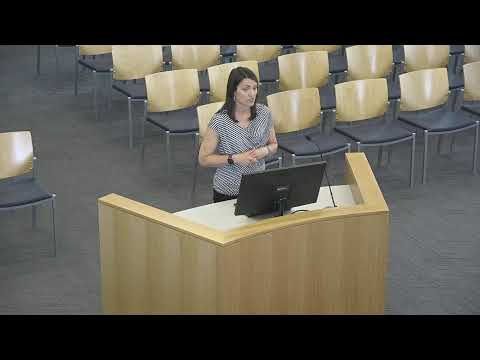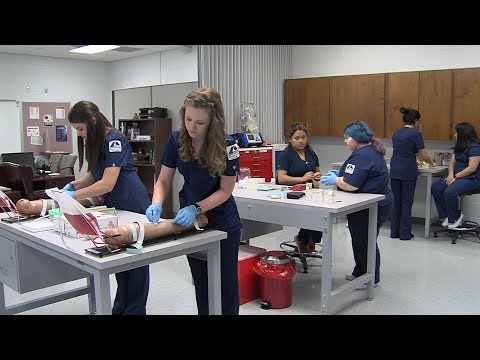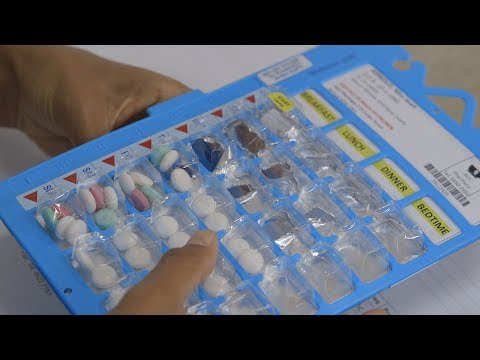What Does a Medical Assistant Do? A Look at the Job Description
Contents
Medical assistants are a vital part of the healthcare team. They perform a variety of administrative and clinical tasks to keep the office running smoothly. But what exactly does a medical assistant do? Let’s take a closer look at the medical assistant job description.
Checkout this video:
Job Description
A medical assistant is a jack-of-all-trades in a doctor’s office or outpatient clinic. They are responsible for both administrative duties, such as scheduling appointments and handling billing, as well as clinical duties, such as taking patient histories and performing basic lab tests.
In small offices, medical assistants may be responsible for all of these tasks. In larger practices, they may specialize in either the administrative or clinical side of the job. No matter their specialty, all medical assistants must be able to perform basic functions competently and with compassion.
Duties
While the job duties of a medical assistant may vary from one office to another, there are many common tasks that are typically included in the job description. Medical assistants generally perform both administrative and clinical tasks, though the exact balance of duties will depend on the size and type of medical facility where they work.
Common administrative duties for medical assistants include answering phones, scheduling appointments, handling patients’ insurance paperwork and coding patients’ medical records They may also be responsible for collecting and preparing laboratory specimens or performing basic laboratory tests onsite, such as urine dipstick tests.
Medical assistants’ clinical duties usually involve taking and recording patients’ vital signs, including their blood pressure, weight, height and temperature. They also often prepare patients for examination by washing and disinfecting their skin, removing their clothing or draping them with a sheet. In some cases, medical assistants may assist physicians with procedures such as suturing wounds or applying casts to broken bones.
Skills
Most medical assistant programs will include coursework in both clinical and administrative skills. This means that when you graduate, you should have the skills necessary to perform both types of duties in a medical office.
Clinical skills for medical assistants include taking and recording patient vital signs, collecting and preparing blood and other specimens for lab testing, performing basic diagnostic tests, Sterilizing medical instruments and assisting with minor office procedures.
Administrative duties for medical assistants usually involve managing patient scheduling, handling billing and insurance paperwork, maintaining Medical records and handling correspondence. Many times, medical assistants are also responsible for ordering supplies and keeping the office stocked.
Education
Medical assistants are health care professionals who work in ambulatory care settings, such as medical offices, clinics, and hospitals. They are multi-skilled and perform both clinical and administrative tasks. The duties of a medical assistant vary depending on the size and location of the practice, but they typically include taking medical histories, measuring vital signs, preparing patients for examinations, assisting doctors during examinations, giving injections, performing laboratory tests, scheduling appointments, handling correspondence, billing patients, and coding insurance forms.
Most medical assistants have at least a high school diploma or equivalent. However, many employers prefer to hire candidates who have completed an accredited medical assisting program. These programs generally last between one and two years and lead to a certificate or diploma. Some programs also offer an associate’s degree in medical assisting.
Certification
Medical assistants can become certified through an accredited program. Certification is not required in all states, but employers may prefer or require it. The Certifying Board of the American Association of Medical Assistants offers the Certified Medical Assistant (CMA) credential. To qualify for the CMA, medical assistants must graduate from an accredited medical assisting program and pass a national exam.
Salary
In addition to a competitive salary, medical assistants may also receive benefits such as health insurance paid time off, and retirement savings plans. Some employers also offer bonus opportunities and tuition reimbursement.
Job Outlook
The job outlook for medical assistants is positive, with the Bureau of Labor Statistics projecting a 23 percent growth in employment from 2016 to 2026. This is much faster than the average for all occupations, which is only seven percent. The aging Baby Boomer population is one reason for the growth in demand for medical assistants, as this demographic generally needs more medical care. Additionally, as the Affordable Care Act continues to be implemented, more people will have access to health insurance and will therefore seek out medical care.
Pros and Cons
When it comes to deciding on a career, there are many things to consider. For instance, what are the job prospects in your chosen field? What is the earning potential? What kind of work schedule can you expect? And, most importantly, what will you be doing day-to-day?
If you’re considering a career as a medical assistant, you’re in luck. Medical assisting is one of the fastest-growing occupations in the United States with an expected growth rate of 29% from 2016 to 2026.* That’s nearly double the average growth rate for all occupations!
But what exactly does a medical assistant do? Let’s take a closer look at the medical assistant job description so you can decide if this is the right career for you.
typically work side-by-side with doctors and nurses in outpatient care facilities, such as clinics and physician’s offices. No two days are alike, but here are some common duties you can expect to perform as a medical assistant:
Answering patient phone calls
Scheduling patient appointments
Checking patients in and out
Updating patient medical records
taking and recording patient vitals
Assisting with minor medical procedures
Preparing patients for examination
Collecting and preparing lab specimens
Coding and processing insurance forms
Medical assistants must be able to multitask and handle a variety of tasks during their shifts. They must also have excellent customer service skills to properly care for patients. If you have these skills and are interested in helping others, then a career as a medical assistant may be right for you!
FAQs
Here are answers to some frequently asked questions about the medical assistant job description:
What does a medical assistant do?
A medical assistant is a trained healthcare professional who provides patient care and performs administrative tasks in a healthcare setting.
What are the duties of a medical assistant?
The duties of a medical assistant vary depending on the type of healthcare facility in which they work. In general, medical assistants are responsible for taking patient vital signs, preparing patients for examination, assisting the physician with procedures, documenting patient information, and maintaining medical equipment
What is the difference between a medical assistant and a nurse?
A nurse is a licensed healthcare professional who has completed an accredited nursing program. A medical assistant is not licensed but has completed a certified medical assisting program. Medical assistants cannot perform tasks that can only be performed by licensed health care professionals, such as prescribing medication or performing surgery.
Conclusion
While the job of medical assistant is varied and important, it ultimately boils down to two key points: providing support to patients and staff, and helping to ensure the smooth operation of a medical facility. If you have the necessary skills and qualities, and you’re looking for a rewarding career in healthcare, then working as a medical assistant could be the perfect option for you.







